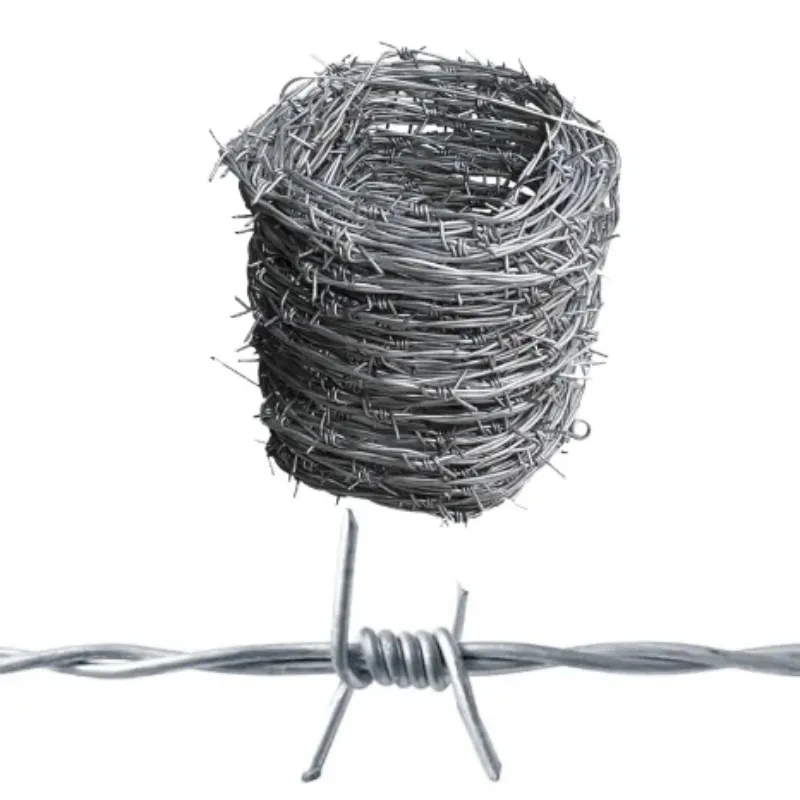-
 Phone:
Phone: -
 Email:
Email:

Exploring the Uses and Benefits of Barbed and Razor Wire Fencing Solutions
The Effectiveness and Impact of Barbed Wire and Razor Wire
Barbed wire and razor wire have long been considered crucial elements in the realm of security and fencing solutions. Both have played an instrumental role in deterring unauthorized access to sensitive areas, particularly in prisons, military installations, and private properties. Despite their shared purpose, these two forms of fencing have distinct characteristics that make them suitable for different applications.
The Origins and Development
Barbed wire was invented in the 19th century as an inexpensive means of enclosing land and controlling livestock. Its basic construction consists of twisted strands of wire, with sharp barbs placed at intervals, designed to prevent animals from crossing boundaries. As societies evolved and urbanization increased, barbed wire found new applications. It became popular in agriculture for fencing fields and livestock, but over time, its reputation grew as a formidable barrier for security purposes.
Razor wire, on the other hand, emerged as a more advanced and lethal alternative to barbed wire. Developed during the early 20th century, razor wire incorporates sharp metal blades or strips attached to wire strands, offering a more intimidating visual deterrent. The design is meant to inflict injury upon anyone who attempts to breach its integrity, making it particularly effective for high-security environments.
Security Applications
Both barbed wire and razor wire are utilized for various security applications, albeit in different contexts. Barbed wire is often found in agricultural settings, as well as on residential properties seeking a low-cost deterrent against intruders. While effective in its own right, barbed wire may not always provide the highest level of security. Its primary function is to slow down intruders rather than completely prevent unauthorized access.
Razor wire, in contrast, is utilized in much more sensitive environments. Its presence is commonly seen surrounding prisons, military facilities, and critical infrastructure. The unique design aims to create not only a physical barrier but also a psychological one—serving as a stark reminder of the consequences of trespassing. The severe injuries it can inflict make it clear that such areas are off-limits, and any attempts to breach these barriers are likely to result in serious harm.
barbed wire razor wire

Legal and Ethical Considerations
The use of barbed wire and razor wire raises legal and ethical questions. While these materials can serve vital security purposes, they can also pose significant risks to both humans and animals. Incidents of injury to trespassers, particularly in the case of razor wire, have led to legal battles over liability and property rights. Many argue that the deployment of such dangerous materials reflects a disproportionate response to security concerns and may violate human rights standards.
Additionally, the presence of razor wire in public spaces, such as alongside highways or in urban areas, invites further scrutiny. Communities often view such measures as symbols of oppression or as indicators of failing public safety policies. Finding a balance between necessary security measures and maintaining a humane society becomes crucial as cities grapple with crime and safety.
Alternatives and Innovations
In response to these concerns, some have begun advocating for alternatives to traditional barbed and razor wire. Innovations in security technology, such as surveillance cameras, motion sensors, and smart fencing systems, provide safer and potentially more effective deterrents. These alternatives not only enhance security but also reduce the risk of injury posed by sharp materials.
Moreover, the trend towards creating secure yet accessible environments prompts a reevaluation of how boundaries are established. As communities place increased emphasis on inclusivity and safety, the evolution of fencing solutions towards more humane and less aggressive methods is gaining traction.
Conclusion
In summary, barbed wire and razor wire serve essential roles in security systems, each with its specific advantages and contexts of application. While they effectively deter unauthorized access, the potential dangers and ethical implications of their use cannot be ignored. As society continues to evolve, so too must our approaches to security, with a growing emphasis on safety, dignity, and innovation. In navigating the complex terrain of security and human rights, we must look for solutions that respect both our need for safety and our commitment to humane treatment.
-
Wire Mesh for Every Need: A Practical SolutionNewsJul.25,2025
-
Steel Fences: Durable, Secure, and Stylish OptionsNewsJul.25,2025
-
Roll Top Fencing: A Smart Solution for Safety and SecurityNewsJul.25,2025
-
Cattle Farm Fencing Solutions for Maximum SecurityNewsJul.25,2025
-
Affordable Iron Binding Wire SolutionsNewsJul.25,2025
-
Affordable Galvanized Wire SolutionsNewsJul.25,2025
-
Wire Hanger Recycling IdeasNewsJul.25,2025








